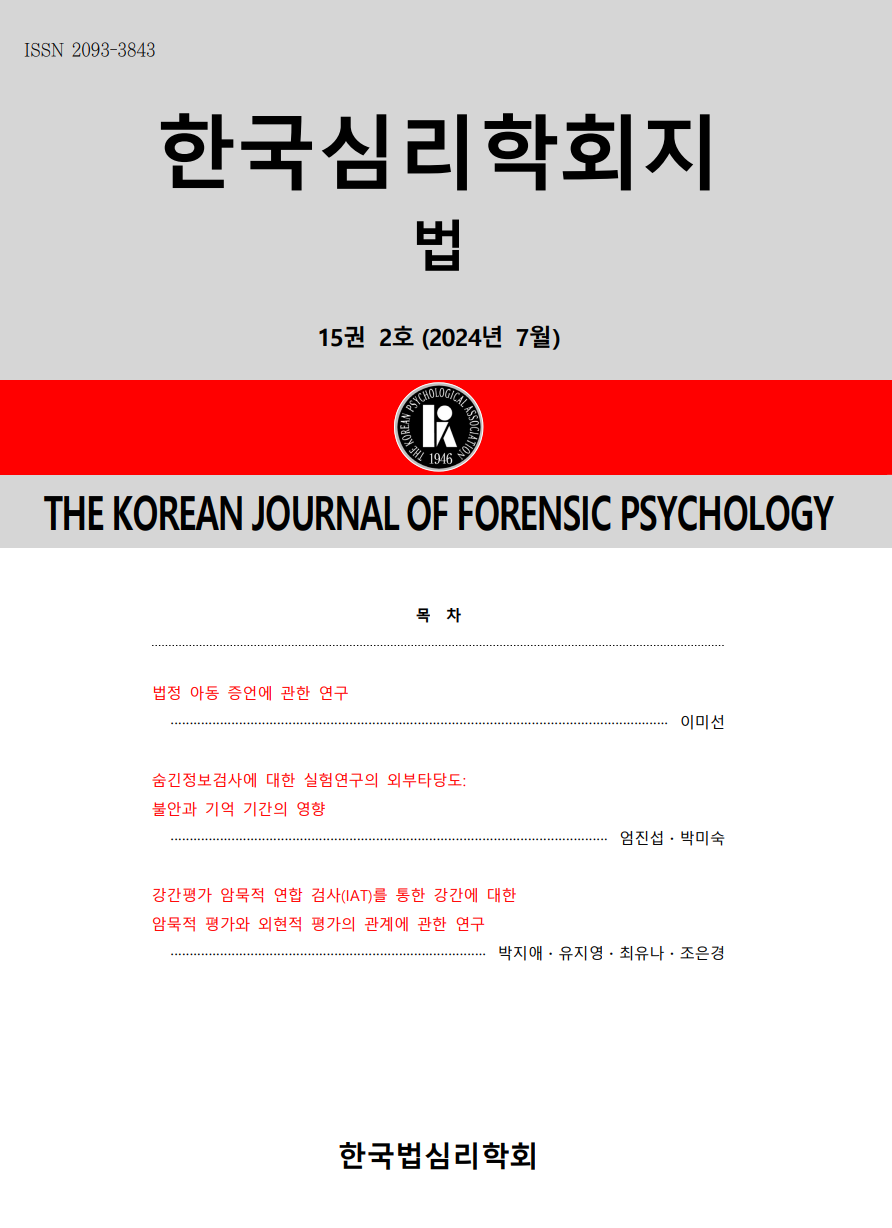open access
메뉴
open access
메뉴 ISSN : 2093-3843
ISSN : 2093-3843
This study investigated the selection of distracters for identification lineups based on suspect-matched, description-matched, and composite-matched procedures. The composite-matched procedure was newly developed and had components of visual description. Child and adult participants watched a video in which a “crime” occurred and then identified the perpetrator two days later from the lineups that were created based on the similarity to the suspect picture, verbal description and composites made by children. Results showed that the identification from the description-matched lineups was more accurate than the other two in the perpetrator-absent condition. Participants’ confidence on their answers was marginally higher in the perpetrator-present condition than perpetrator-absent condition. Adults were more accurate than children, however showed no significant differences among three lineup procedures. Both suspect and composite matched procedures have visual components. Higher similarity among distractors on these procedures could have caused children to be more confused and less accurate than adults and to be relatively better in the description matched procedure.
